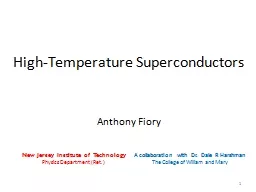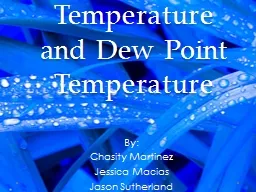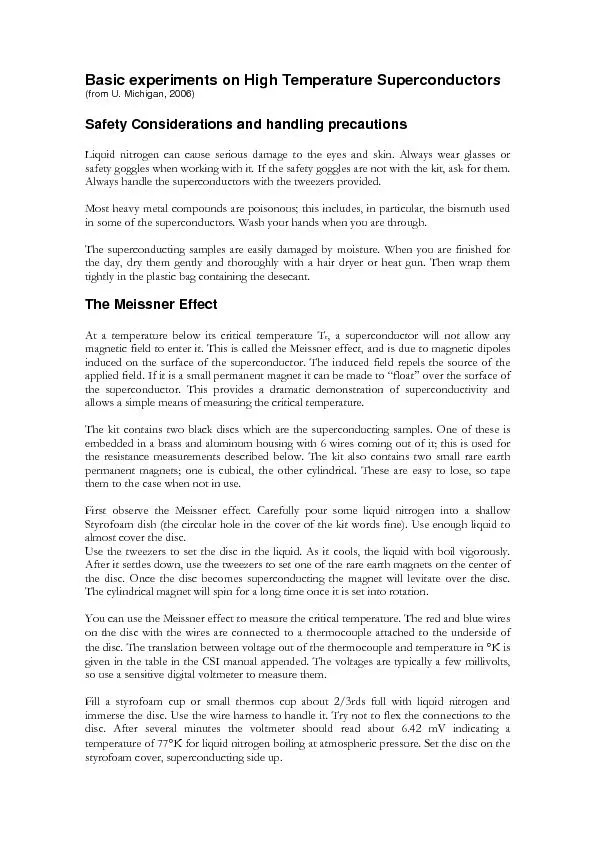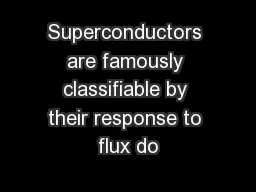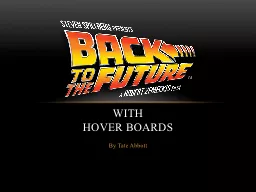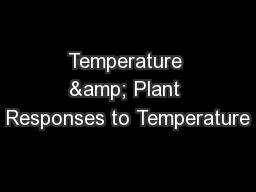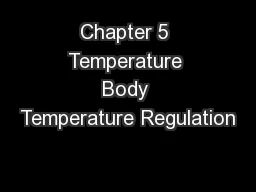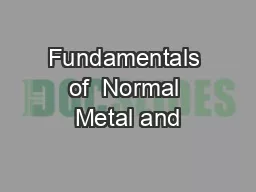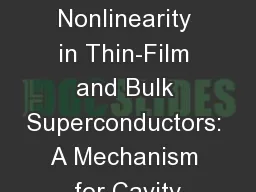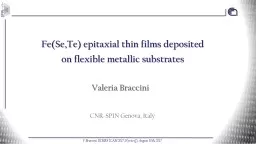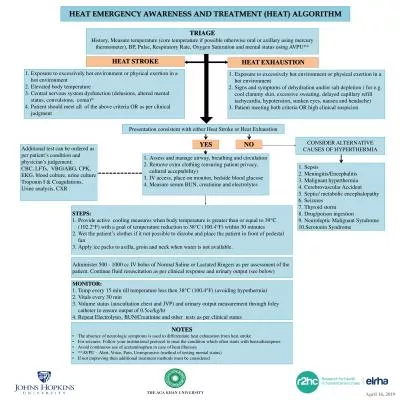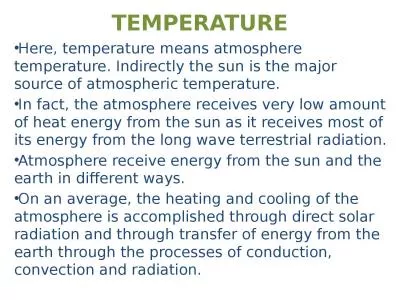PPT-High-Temperature Superconductors
Author : hysicser | Published Date : 2020-08-27
Anthony Fiory 1 New Jersey Institute of Technology Physics Department Ret A collaboration with Dr Dale R Harshman The College of William and Mary Outline Conventional
Presentation Embed Code
Download Presentation
Download Presentation The PPT/PDF document "High-Temperature Superconductors" is the property of its rightful owner. Permission is granted to download and print the materials on this website for personal, non-commercial use only, and to display it on your personal computer provided you do not modify the materials and that you retain all copyright notices contained in the materials. By downloading content from our website, you accept the terms of this agreement.
High-Temperature Superconductors: Transcript
Download Rules Of Document
"High-Temperature Superconductors"The content belongs to its owner. You may download and print it for personal use, without modification, and keep all copyright notices. By downloading, you agree to these terms.
Related Documents

